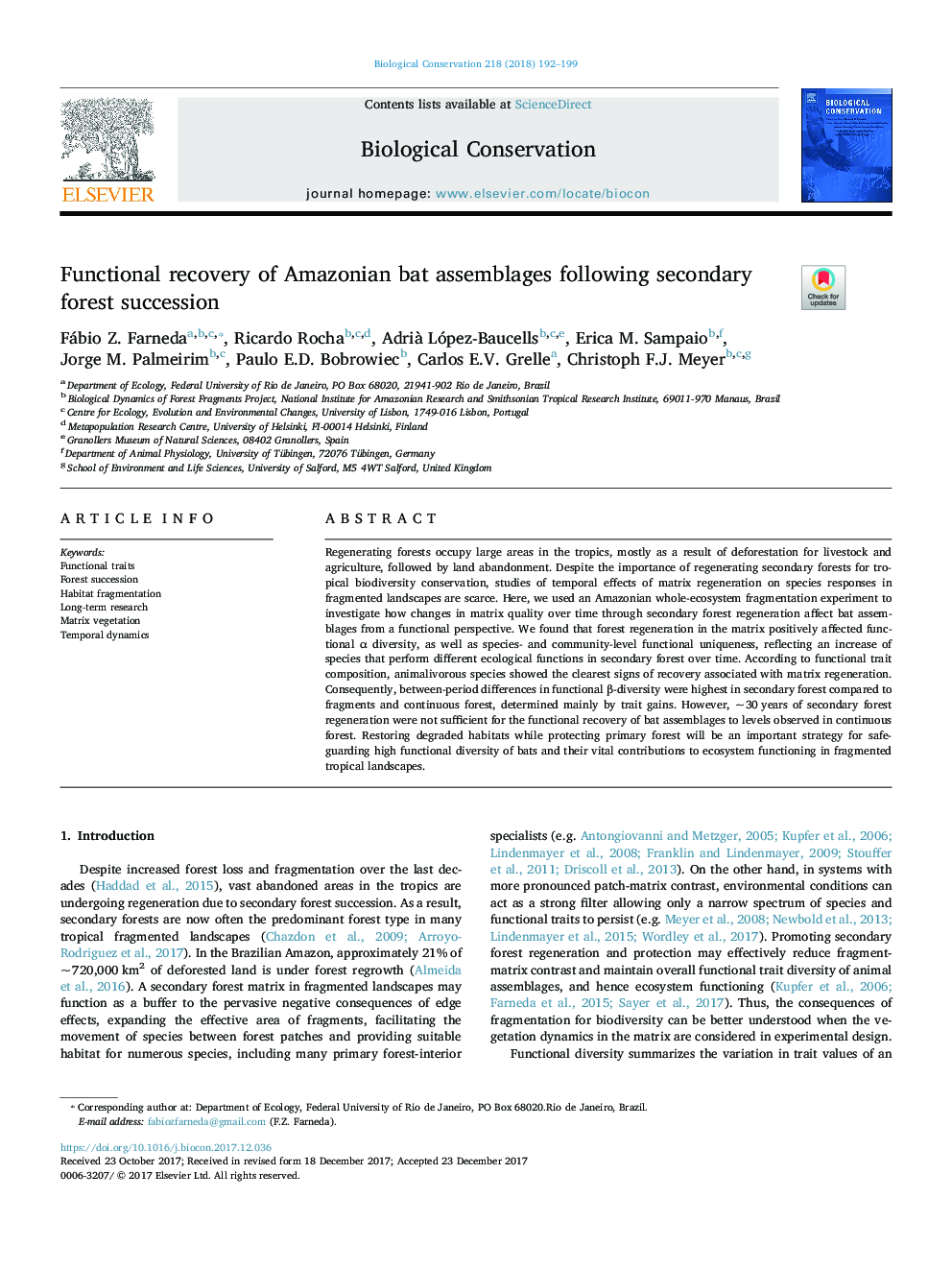| Article ID | Journal | Published Year | Pages | File Type |
|---|---|---|---|---|
| 8847519 | Biological Conservation | 2018 | 8 Pages |
Abstract
Regenerating forests occupy large areas in the tropics, mostly as a result of deforestation for livestock and agriculture, followed by land abandonment. Despite the importance of regenerating secondary forests for tropical biodiversity conservation, studies of temporal effects of matrix regeneration on species responses in fragmented landscapes are scarce. Here, we used an Amazonian whole-ecosystem fragmentation experiment to investigate how changes in matrix quality over time through secondary forest regeneration affect bat assemblages from a functional perspective. We found that forest regeneration in the matrix positively affected functional α diversity, as well as species- and community-level functional uniqueness, reflecting an increase of species that perform different ecological functions in secondary forest over time. According to functional trait composition, animalivorous species showed the clearest signs of recovery associated with matrix regeneration. Consequently, between-period differences in functional β-diversity were highest in secondary forest compared to fragments and continuous forest, determined mainly by trait gains. However, ~ 30 years of secondary forest regeneration were not sufficient for the functional recovery of bat assemblages to levels observed in continuous forest. Restoring degraded habitats while protecting primary forest will be an important strategy for safeguarding high functional diversity of bats and their vital contributions to ecosystem functioning in fragmented tropical landscapes.
Related Topics
Life Sciences
Agricultural and Biological Sciences
Ecology, Evolution, Behavior and Systematics
Authors
Fábio Z. Farneda, Ricardo Rocha, Adrià López-Baucells, Erica M. Sampaio, Jorge M. Palmeirim, Paulo E.D. Bobrowiec, Carlos E.V. Grelle, Christoph F.J. Meyer,
